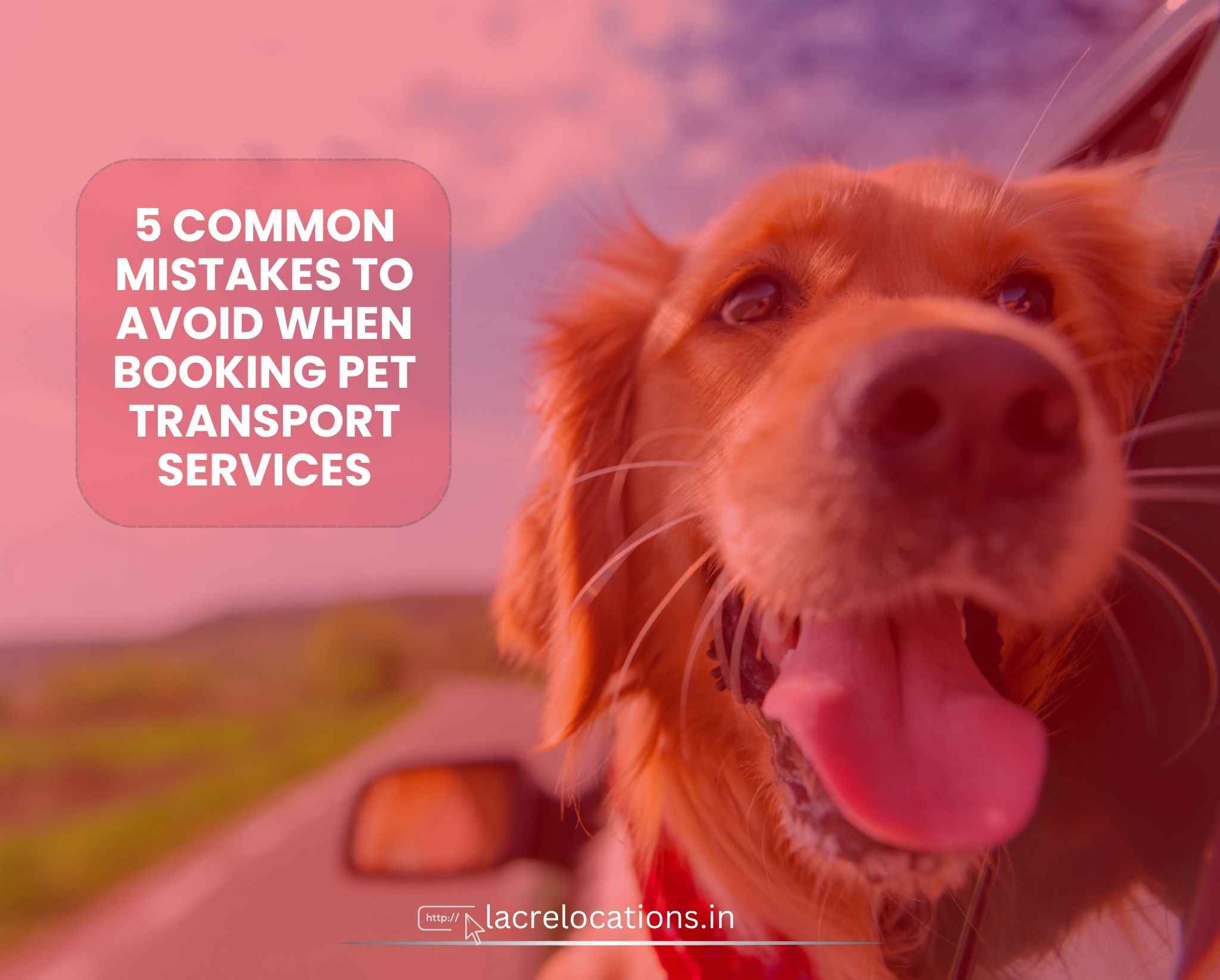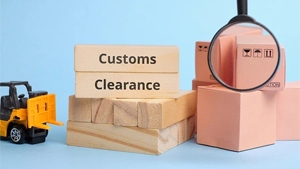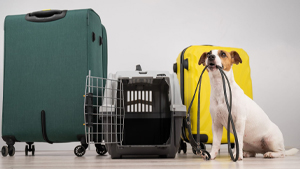For many pet owners, pet transport services are important. Whether you are taking a long vacation, relocating to a different country or dealing with an emergency, it is important to move your pet safely. Since pets are members of the family, their security, comfort, and welfare while traveling cannot be jeopardised. Pet transportation can be complicated, requiring careful planning, a lot of regulations and logistics. When scheduling these services pet owners frequently make mistakes. These mistakes may result in needless anxiety, delays, or even injury to the participating animals.
This blog highlights five common mistakes to avoid when booking pet transport services. Understanding these mistakes will help you make better decision and ensure a smooth and safe trip for your pet.
Mistake 1 – Not Researching Pet Transport Regulations
Not researching the laws of the nation or area where the pet is traveling is one of the most important mistakes pet owners make. The laws governing the import and export of animals vary from nation to nation. These regulations are considered to safeguard local animal populations, stop the spread of illness and guarantee the well being of pets while they are in transit.
For instance, Australia has strict import regulations. Pets arriving in Australia must complete a 10-day quarantine period in an approved facility. This regulation aims to prevent diseases like rabies, which the nation has effectively managed. In a similar vein certain vaccinations, microchip identification and health certificates from certified veterinarians are required in many European nations.
Failing to meet these requirements can result in your pet being denied entry, quarantined for extended time, or sent back to the country of origin. Such complications have substantial emotional and financial costs. In addition, before allowing animals to be transported, some airlines and pet shipping businesses demand documentation of compliance.
To avoid this mistake, start your research early. Visit official government websites or consult with pet relocation services familiar with the regulations of your destination. Confirm vaccination schedules, paperwork and any quarantine protocol. Planning saves time and avoids surprises that could jeopardise your pet’s journey.
Mistake 2 – Choosing the Wrong Carrier or Crate
The pet carrier or crate is your pet’s temporary home during travel. Choosing the incorrect carrier type or size can lead to stress, discomfort or injury. A lot of pet owners don’t realise how important it is to use a crate that complies with international standards.
The International Air Transport Association (IATA) sets guidelines for pet carriers used in air travel. These rules outline construction materials, ventilation, security and minimum size requirement. Your pet can comfortably lie down, stand up and turn around in the right carrier. To guarantee safety when being handled, it should be strong, well-ventilated and leak-proof.
Using a crate that is too small restricts movement, leading to anxiety and physical discomfort. If the crate is too big, your pet may slide around while you’re driving, which could hurt them more. If the crate isn’t strong enough, some pets might also try to get out.
Consider your pet’s size, weight, and temperament when choosing a carrier. Soft-sided carriers may be better suited for small, calm animals travelling short distances, while hard sided crates provide superior protection for larger or more anxious pets. An excessively large crate increases the risk of injury because it may cause your pet to slide around while being transported. If the crate is not sufficiently secure some pets might also attempt to flee.
Proper labelling of the crate with your pet’s name, your contact information, and “Live Animal” stickers is also essential. This ensures proper handling by airline staff or transport personnel. Making the time and effort to select the best carrier guarantees adherence to airline and pet shipping company regulations while also easing your pet’s travel anxiety.
Mistake 3 – Failing to Acclimate Your Pet to the Carrier
Sudden confinement in an unfamiliar crate is one of the leading causes of travel anxiety in pets.Many owners make the mistake of introducing the carrier only at the time of travel. Panic, excessive barking, or meowing and even physical harm if the pet tries to flee can result from this. Your pet will feel less anxious and be more prepared for the trip if they are acclimated to the carrier well in advance of the trip. Start by putting the crate in a room that is frequently visited by your pets. Encourage your pet to freely explore the crate by keeping the door open. To establish a favourable association with the carrier, use positive reinforcement in the form of toys, treats or praise.
Increase the amount of time your pet spends in the crate. Try shutting the door for brief moments while remaining close by, then extend the time. This keeps the pet from feeling confined while they adjust to the small area. For longer journeys, carry the crate in the car, or around the house to mimic travel conditions. This lessens fear and acquaints your pet with movement. During transportation, pets who are accustomed to their carriers are typically more relaxed. Stress-related problems like excessive panting, drooling, or refusal to eat are less likely to affect them.
Mistake 4 – Not Consulting a Veterinarian Pre-Travel
It is dangerous to schedule pet transportation without first obtaining a veterinary examination. A comprehensive examination guarantees your pet is healthy enough to travel and reduces the possibility of medical crises while in transit. Veterinarians can evaluate your pet general health, look for illnesses or infections that could get worse while travelling and confirm that vaccinations are current. In order to verify that the pet is healthy and free of communicable diseases, many nations require a health certificate to be issued no more than a few days before travel. Your veterinarian may occasionally suggest medicines to treat motion sickness or travel anxiety. Sedation should only be used sparingly and under a doctor’s supervision, though. In stressful situations or at high elevations, certain sedatives can have negative side effects.
Discuss all travel plans with your vet well ahead of time. Obtain the necessary documentation, including vaccination records and certificates. Your vet may also provide advice on feeding schedules, hydration, and managing your pet’s behavior during the journey. Skipping this step can result in denied boarding or medical complications that put your pet at risk.
Mistake 5 – Overlooking Pet Insurance for Travel
Traveling with pets involves risks that may not be covered by your regular pet insurance or travel insurance. Medical emergencies, accidents, trip cancellations, or lost pets can result in significant expenses. Many pet owners overlook the option of pet travel insurance. This specialized insurance covers unexpected costs during transit, such as emergency veterinary care, quarantine fees, or changes to travel plans.
Pet travel insurance offers peace of mind. It ensures that if something goes wrong, you will not have to bear the full financial burden. This coverage is especially important for international pet relocations, which tend to be more complex and expensive. Before purchasing insurance, review the policy carefully. Check what is included, any exclusions, and the claim process. Some insurance providers also offer coverage for delays or lost luggage that may impact your pet’s care. Adding pet travel insurance to your checklist of preparations enhances your overall planning and protects your pet throughout the journey.
Conclusion
In conclusion, careful planning is crucial when booking pet transport services. Avoiding common mistakes like ignoring travel regulations, picking the wrong carrier, not getting your pet used to the crate, skipping a vet check, and overlooking travel insurance helps ensure your pet’s safety and comfort. Taking these steps reduces stress and potential problems during travelling. Choosing reliable pet transport providers and preparing your pet properly leads to a smoother, safer journey and peace of mind for you as an owner.

















